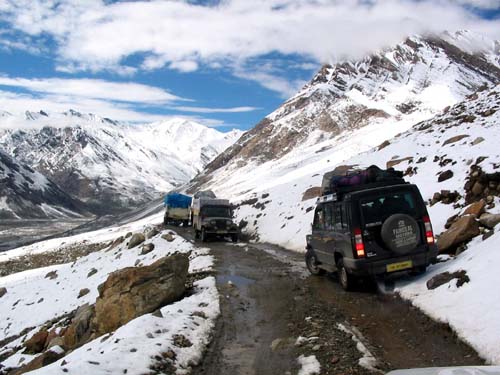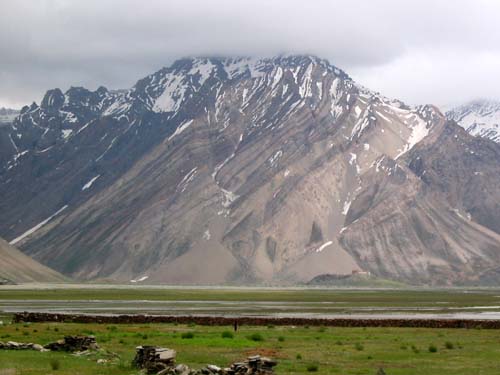
The Mulbekh Gompa, about three quarters of the way from Leh to Kargil, marks the end of the Buddhist Ladakh and the beginning of its Muslim parts. The Muslim culture here as in Kargil and from here on toward the alpine valleys of Kashmir as well as the first third of the way toward Zanskar, leading through the Suru Valley, is related to Baltistan, the Pakistani region further west of the border with India formed here by the Indus River. Already in Khalsi, a scruffy junction town half way between Leh and Kargil, one can catch a glimpse of the Muslim presence as windows of some of the local shops are decorated with pictures of Ayatollah Khomeini, reminding one that regions further west are mostly Shiite Muslim rather than Buddhist.
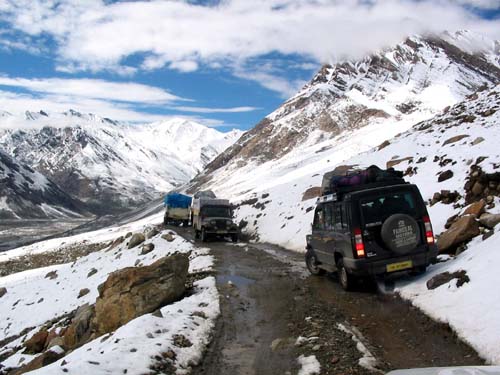
Suru Valley constitutes the main supply route for the remote Zanskar and the journey is stunning though tiring and can be difficult. It takes some 12 hours to traverse the distance between Kargil and Padum in Zanskar by a 4-wheel drive, and the difficult part is crossing the Pensi La, often shrouded in clouds and subject to blizzards.
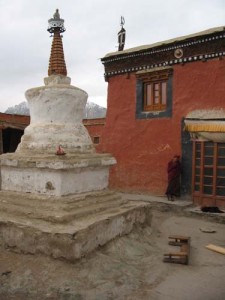
The first stage of the Suru Valley road past Kargil leads through Muslim villages. The road is relatively well maintained, as Kargil market is still too close and a lifeblood of these villages. Past the scenic Muslim village of Panikhar the road begins to deteriorate. Once the spires of the last village mosque fade away the valley narrows and high mountain ridge of the
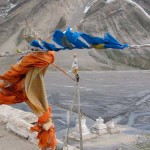
Himalaya that separates Suru valley from Kashmir to the south becomes more prominent. Not far past Panikhar first glacier oozes down a side valley onto a valley floor and the twin peaks of Nun (7135m / 23,400ft) and Kun (7087 / 23,242) come to view.
A spectacular scenery continues on to the Rangdum Monastery that is sat atop of a small hill in a wide-open valley framed by jagged snow-capped peaks. Impressive multi-color layers of strata that lie one upon another, laid down by natural forces at 45-degree angle, form a sheer backdrop of the Rangdum Gompa. The
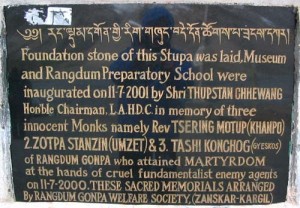
sense of the remote and desolate is omnipresent and awe-inspiring. Though a small hamlet of a few houses dots the flat plain, revealing there is life beyond the monastic edifice, the gompa’s solitude and eerie desolation is downright unnerving, definitely at best an outpost for search of spiritual wisdom and quiet meditation. There are some three dozen monks in residence and the their confines are truly Spartan. As the monks retreat into their quarters and the freezing wind howls over the ramparts of the monastic walls, a sense of destitute is as strong as the ambiance is peaceful. So much more it is shocking to imagine that in July, 2000, three Rangdum monks were brutally killed by a small band of Muslim militants (who were never found) for no apparent reason though it’s widely believed the killing was on purpose instigated by Kashmir separatists sat to extend their terrorist activities amidst the remote parts of Jammu-Kashmir of which Ladakh is a part.
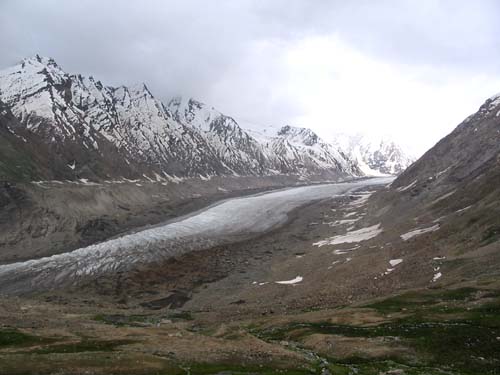
After Rangdum the Suru Valley road starts climbing toward the summit of Pensi La (4450m / 14,400ft), the gateway to Zanskar. Though the high altitude of the pass is prone to sudden storms and heavy snowfall can block the road even in mid summer for days, on even a marginally fair day the views and vistas from the top of the path are simply stunning. When the clouds part above the snow-capped peaks of the Himalaya the long tongue of the Drung-Drang Glacier reveals itself in all its grandeur as it winds down from the high mountain peaks. One can gape in awe at the site for hours if it were not for the piercing chill of the wind that prompts one to proceed toward Zanskar. From top of Pensi La the road starts a long gradual descent toward Padum plain and the heart of Zanskar, and the impression that one truly entered one of the most remote regions of India becomes complete.
